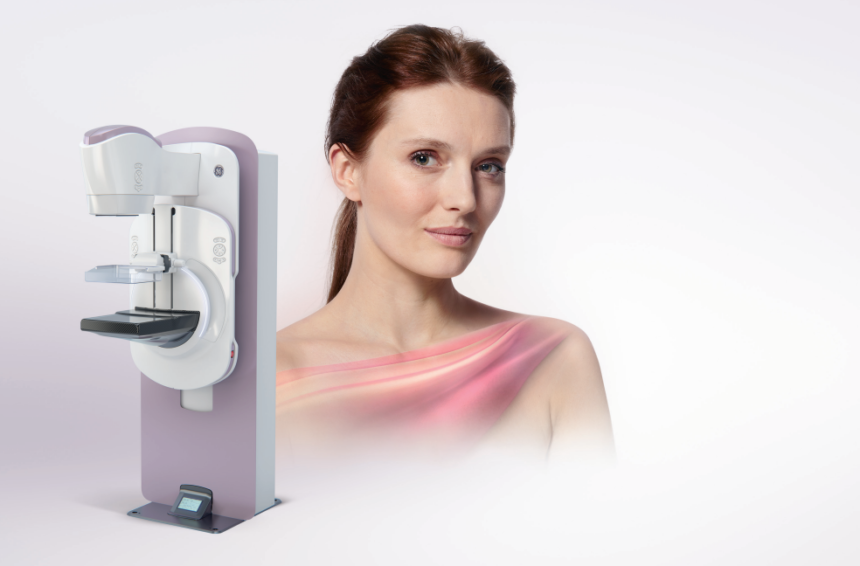The Senographe Pristina was created for women, by women.
Claire Goodliffe – marketing director for women’s health at GE Healthcare -set out to ‘humanize mammography’ after research indicated that as many as 40 percent of women skipped breast cancer screening due to fear, anxiety and discomfort surrounding mammograms. She and her colleagues gathered data from more than 1,200 doctors, technicians, patients, and 25 clinics before developing the Senographe Pristina. Many of the engineers, designers, and managers involved in the creation and manufacturing of the machine were women.
The first mammography technology was called “Senographe”.
In the 1960’s a pair of French engineers – Jean Bens and Emile Gabbay – created the first breast-dedicated X-ray machine called the “Senographe”. It went on the market in 1966, and in 1987 GE Healthcare acquired Bens and Gabby’s company. This marked GE Healthcare’s foray into mammography technology – and the Senographe Pristina is a nod to the pioneers of the mammogram.
The Senographe Pristina delivers 3D mammography at a 2D radiation dose.
The Senographe Pristina delivers superior diagnostic accuracy at the same dose as 2D – and has the lowest radiation dose of any FDA-approved 3D mammography technology on the market.
The Senographe Pristina increases patient comfort while decreasing anxiety.
According to a survey of 315 patients in Europe:
- 83 percent rated their experience with the Senographe Pristina as ‘better than traditional mammography’.
- 70 percent said it was ‘more comfortable than traditional mammography’.
- 54 percent noted ‘reduced anxiety’ with the Senographe Pristina.
- 66 percent perceived the exam to be shorter with the Senographe Pristina than with traditional mammography.
3D Mammography with the Senographe Pristina is now available at Bergen Imaging Center. Call or email to schedule your appointment today.

